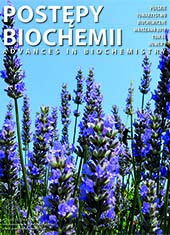Enzymatic and non-enzymatic functions of secreted phospholipases A2
Abstract
Phospholipases catalyze enzymatic degradation of membrane lipids. The phospholipases are divided into four major groups: A1, A2, C, and D by the type of ester bond which is hydrolyzed. Phospholipases A2 (PLA2) hydrolyze membrane glycerophospholipids at sn-2 position releasing lysophospholipid and free fatty acid. The PLA2s are involved in biosynthesis of intracellular messengers (eicosanoids), endo- and exocytosis, and cytoskeleton reorganization. Moreover, secreted PLA2 play various functions which are not dependent on their enzymatic activity. An intriguing question is specific interaction of sPLA2
from snake venom with several protein acceptors (human coagulation factor Xa or CFTR). In this review, we describe classification of PLA, mechanism of catalytic action, as well as interactions of snake venom PLA2 with various human proteins.
Downloads
Published
Issue
Section
License
All journal contents are distributed under the Creative Commons Attribution-ShareAlike 4.0 International (CC BY-SA 4.0) license. Everybody may use the content following terms: Attribution — You must give appropriate credit, provide a link to the license, and indicate if changes were made, ShareAlike — If you remix, transform, or build upon the material, you must distribute your contributions under the same license as the original. There are no additional restrictions — You may not apply legal terms or technological measures that legally restrict others from doing anything the license permits.
Copyright for all published papers © stays with the authors.
Copyright for the journal: © Polish Biochemical Society.




